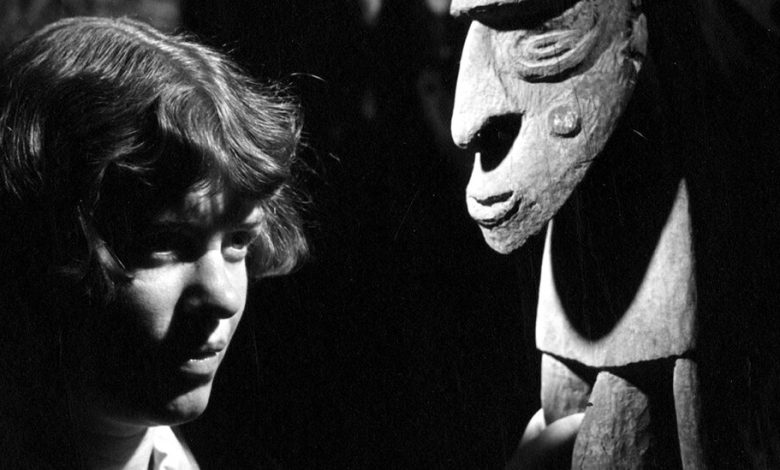Could LSD Have Achieved World Peace? Ask Margaret Mead.

TRIPPING ON UTOPIA: Margaret Mead, the Cold War, and the Troubled Birth of Psychedelic Science, by Benjamin Breen
Halfway through “Tripping on Utopia: Margaret Mead, the Cold War and the Troubled Birth of Psychedelic Science,” the historian Benjamin Breen presents a tantalizing hypothetical, one that would have had an inestimable impact on culture, medicine and perhaps the whole of civilization had it come to pass: What if, in the mid-1950s, Margaret Mead had publicly endorsed psychedelics?
It’s not as outrageous a proposition as it may sound. The pioneering anthropologist “made studying LSD something close to her full-time job” in the summer of 1954. Though we don’t know about her own experience with the drug, Mead was surrounded by researchers and users who enthused about the nonaddictive, liberatory, insight-generating potential of acid and mescaline, and she had written about the “curative properties” of peyote two decades prior while studying the Omaha people.
These natural drugs were new to the white West, and LSD was new to the entire world, having been (accidentally) discovered by a Swiss chemist in 1943, so these substances were free of criminalization and stigma. Mead’s blessing might have created a climate in which they still would be.
“Tripping on Utopia” makes the convincing case that Mead and her cohort were key players in the first wave of psychedelic science, which began not in the 1960s but in the 1920s. “Timothy Leary and the baby boomers did not usher in the first psychedelic era,” Breen writes. “They ended it.”
Mead’s interest in psychedelics stemmed from her lifelong quest to find a way to help humanity design peaceful, culturally diverse societies full of self- actualized individuals — in essence, a utopia. For her, the dream only intensified during World War II and the Cold War, when the specter of nuclear apocalypse (and the less totalizing yet still nefarious “psychochemical warfare”) loomed.
But as she and the rest of her generation navigated “the most rapid period of change in human history, before or since,” Breen explains, Mead both inadvertently and intentionally participated in government projects more commonly associated with dystopia. In 1943, she worked for the Office of Strategic Services, a pre-C. I. A. intelligence agency, on a project that explored using drugs to aid military interrogations. And she became intimately involved in the Macy Foundation, a medicine and health-focused philanthropic organization, which was heavily funded by the C.I.A. in the 1950s. The money’s source was a fact kept secret from most, but not all of Mead’s longstanding colleagues and friends, one of whom was a career C.I.A. agent.
Mead and her one-time husband, Gregory Bateson, were morally opposed to the weaponization of science, yet Bateson, like Mead, had his own sad role to play in American military efforts. An “awkwardly tall Englishman” and the sole surviving son of a famed biologist father, Bateson met Mead while working in New Guinea, in 1932. In 1943, he joined the O.S.S. with the belief that “if the Nazis were using science for manipulation, scientists on the other side were duty bound” to “combat it.”
But the work he did there, on hypnosis- and drug-assisted interrogations, which haunted him for the rest of his life. Worse, immediately after the dropping of the atomic bomb, he wrote a report proposing a new intelligence agency “specializing in unconventional warfare.” This missive was later credited with spurring the creation of the C.I.A. By 1952, that world of “covert activities and psychological manipulation” was one Bateson “looked on with horror.”
“Tripping on Utopia” is exhaustively researched; Mead alone was dauntingly prolific, and the book’s ambitious scope extends well beyond her abundant archive. Keeping track of the numerous players and their frenetic movements (personally, professionally, and physically) is an organizational challenge that sometimes gets the better of the author.
But Breen is an engaging writer invigorated by his topic, and to synthesize so much information is an accomplishment. Though excising more tangential anecdotes would have aided narrative clarity, Breen’s investment in even minor characters, like the mysteriously disappeared artist Weldon Kees (who may or may not have been involved in the MKULTRA sub-project “Midnight Climax,” in which prostitutes brought their clients to a CIA apartment for observation after they were unwittingly dosed with LSD) is indicative of the passion he brings to his project.
Breen’s empathy is frequently on display, but especially comes to the fore when he turns his attention to Bateson, a man who, at the end of his life, described himself as a smoke ring, “a circle spreading outward into nothingness.”
Despite her reams of writing, Mead was a person with many secrets andher desire to keep one of these — her long-term romantic relationship with another woman — may have been the definitive blow to her optimistic fascination with LSD” By 1955, Mead was being investigated (for the second time) by the F.B.I. and had read studies that showed patients dosed with psychedelics sometimes confessed to truths they wanted to keep under wraps. To create utopia, she’d have to ruin her own life.
TRIPPING ON UTOPIA: Margaret Mead, the Cold War, and the Troubled Birth of Psychedelic Science | Benjamin Breen | Grand Central | 367 pp. | $30